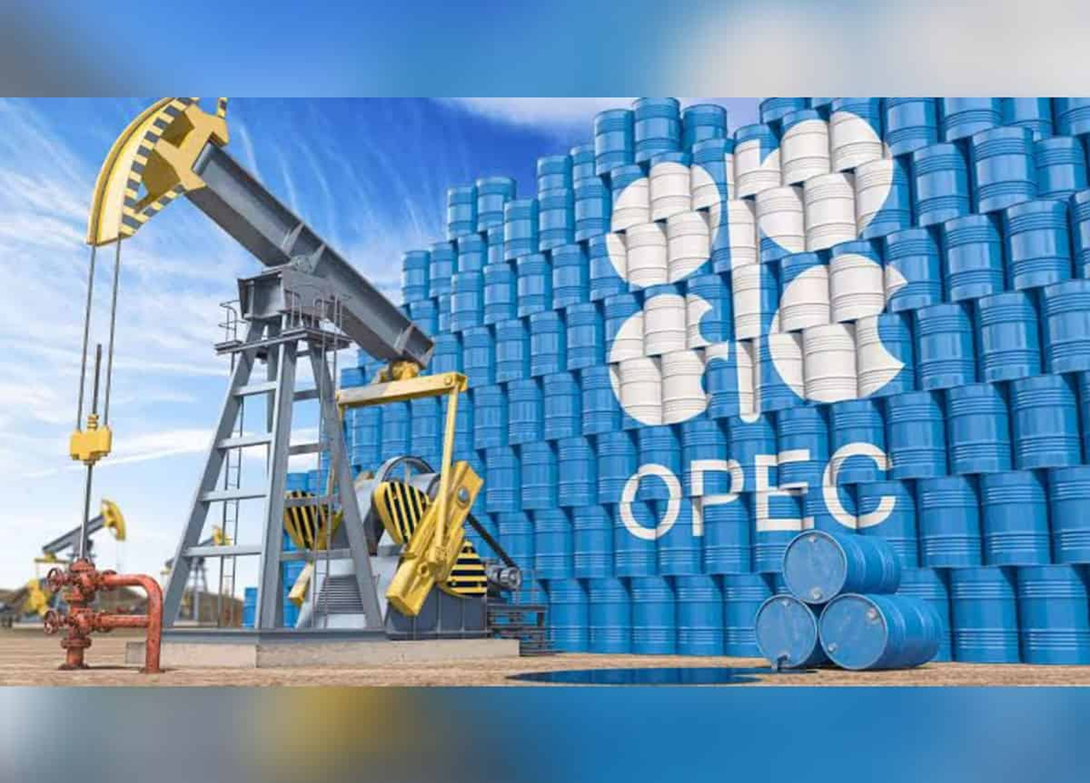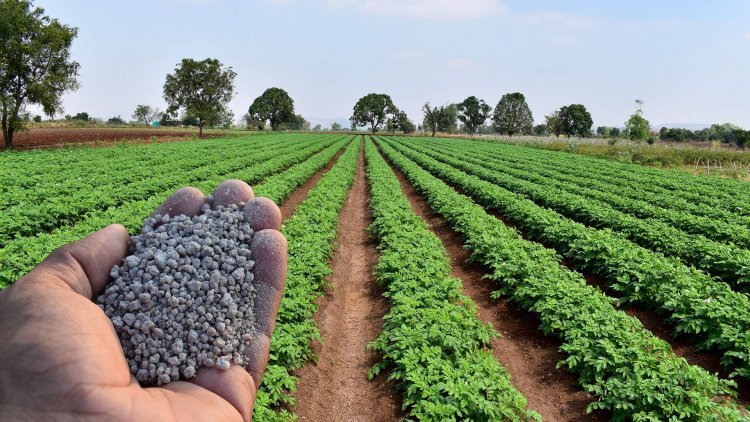- Courses
- GS Full Course 1 Year
- GS Full Course 2 Year
- GS Full Course 3 Year
- GS Full Course Till Selection
- Answer Alpha: Mains 2025 Mentorship
- MEP (Mains Enrichment Programme) Data, Facts
- Essay Target – 150+ Marks
- Online Program
- GS Recorded Course
- Polity
- Geography
- Economy
- Ancient, Medieval and Art & Culture AMAC
- Modern India, Post Independence & World History
- Environment
- Governance
- Science & Technology
- International Relations and Internal Security
- Disaster Management
- Ethics
- NCERT Current Affairs
- Indian Society and Social Issue
- NCERT- Science and Technology
- NCERT - Geography
- NCERT - Ancient History
- NCERT- World History
- NCERT Modern History
- CSAT
- 5 LAYERED ARJUNA Mentorship
- Public Administration Optional
- ABOUT US
- OUR TOPPERS
- TEST SERIES
- FREE STUDY MATERIAL
- VIDEOS
- CONTACT US
OPEC+ Plans to Cut Oil Production
OPEC+ Plans to Cut Oil Production

OPEC+ has recently announced plans to cut oil production, raising concerns about its impact on global oil markets and India's energy security. With India's fuel consumption expected to increase from 4.8 million barrels per day (mb/d) in 2024 to 6.6 mb/d by 2028, these production cuts could drive Indian refiners to seek more crude from the Americas, indicating shifts in global oil trade dynamics.
What is the Organization of the Petroleum Exporting Countries (OPEC)?
- About: OPEC is a permanent, intergovernmental organization established in 1960 by Iran, Iraq, Kuwait, Saudi Arabia, and Venezuela, headquartered in Vienna, Austria.
- Objective: To coordinate and unify petroleum policies among member countries to ensure fair and stable prices for producers, provide an efficient supply of petroleum to consumers, and secure a fair return on investment for stakeholders.
- Members: Includes 12 countries: Algeria, Congo, Equatorial Guinea, Gabon, Iran, Iraq, Kuwait, Libya, Nigeria, Saudi Arabia, UAE, and Venezuela. Qatar left in 2019, and Angola withdrew in 2024.
- Production and Reserves: OPEC members produce about 30% of the world’s crude oil and hold around 80% of proven oil reserves.
What is OPEC+?
- Formation: In 2016, OPEC formed an alliance with 10 additional oil-producing nations in response to declining oil prices due to increased US shale oil production.
- Members: Includes the 12 OPEC members plus Azerbaijan, Bahrain, Brunei, Kazakhstan, Malaysia, Mexico, Oman, Russia, South Sudan, and Sudan.
- Production Share: OPEC+ countries account for approximately 40% of global crude oil production.
Why is OPEC+ Planning to Cut Oil Production?
- Market Stabilization: The cuts aim to stabilize and boost oil prices by managing fluctuating demand and oversupply, improving revenue for oil-producing countries amidst economic uncertainties and geopolitical tensions.
- Response to Non-OPEC Supply Increases: Increased supply from non-OPEC+ countries, especially the US, Canada, Brazil, and Guyana, challenges OPEC+ market share, prompting cuts to maintain price stability.
- Geopolitical Tensions: Conflicts in the Middle East, disruptions in shipping routes, and sanctions on Russian crude impact oil supply and prices. OPEC+ cuts aim to address these issues.
- Long-Term Strategy: To ensure sustainable production levels and prevent market crashes by controlling output, creating a more stable market environment.
Implications of OPEC+ Oil Production Cuts:
- Global Oil Prices: A reduction in OPEC+ output is expected to increase global oil prices, potentially raising import costs for countries and affecting inflation rates and economic growth.
- Shift in Supply Dynamics: India may need to increase imports from non-OPEC+ countries, diversifying its sources and reducing reliance on West Asian crude oil. West Asian imports declined from 2.6 mb/d in 2022 to 2 mb/d in 2023.
- Potential for Price Volatility: While diversification can enhance energy security, it may also expose India to price fluctuations from new suppliers, affecting import bills and trade balance.
- Economic Impact: Higher oil prices could strain India's economy, particularly sectors dependent on oil, leading to increased transportation costs, inflation, and economic instability.
Projected Trends in India's Liquid Fuels Consumption and Capacity Expansion:
- Growing Fuel Consumption: India’s liquid fuels consumption is projected to rise from 5.3 mb/d in 2023 to 6.6 mb/d by 2028, driven by population and GDP growth. The EIA forecasts a 4-5% annual growth rate until 2037.
- Capacity Expansion: India has increased refining capacity by 1.3 mb/d from 2011 to 2023 and plans to expand further, including 11 new projects by 2028, such as the 1.2 mb/d Ratnagiri mega project.
Major Challenges in India's Energy Sector:
- Energy Security and Import Dependency: India relies on imports for over 75% of its oil needs, projected to exceed 90% by 2040. Geopolitical disruptions, like the Russia-Ukraine war and sanctions on Russia, have heightened energy security risks. India's energy transition is also challenged by dependence on China for renewable technologies.
- Domestic Production Decline: Crude oil production has decreased from 32.2 million tonnes in 2019-20 to 29.2 million tonnes in 2022-23 due to insufficient investment and ageing fields.
- Infrastructure Bottlenecks: Limited pipeline infrastructure and storage facilities impede efficient oil transport and distribution. Challenges include land acquisition issues, regulatory delays, and under-investment.
- Rising Import Bill: Higher global oil prices impact India's import bill, projected to reach USD 101-104 billion in FY25, potentially worsening the current account deficit and causing higher inflation and fiscal deficits.
Way Ahead:
- Strengthening Bilateral Relations: India should build stronger ties with oil-producing nations in the Americas for stable and favorable supply agreements.
- Investment in Domestic Refinery Capacity: Continued investment in refining infrastructure is crucial. With 11 new projects planned by 2028, enhancing self-sufficiency and meeting growing demand must be prioritized.
- Strategic Reserves: Developing strategic petroleum reserves can provide a buffer against supply disruptions and price shocks, ensuring energy security.
- Diversification of Energy Sources: In addition to crude oil, India should explore renewable energy sources to reduce fossil fuel dependence and enhance energy resilience.
- Monitoring Global Trends: Staying informed about global oil market trends and OPEC+ decisions will help India adapt its energy strategy, ensuring sustainable growth and stability in the energy sector.
Conclusion:
OPEC+ production cuts reflect strategic efforts to stabilize global oil markets and boost prices amidst various economic and geopolitical challenges. For India, these cuts pose both opportunities and risks. The shift towards non-OPEC+ oil sources may offer diversification benefits, but it also brings potential price volatility and economic impacts. As India’s fuel consumption continues to rise, addressing its energy sector challenges through increased domestic refining capacity, strategic reserves, and diversification into renewable energy will be crucial for maintaining energy security and economic stability. Proactive monitoring of global oil trends and adapting strategies accordingly will be key to navigating the evolving energy landscape.




